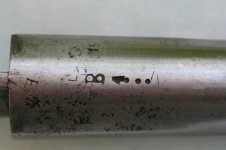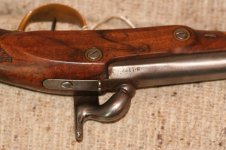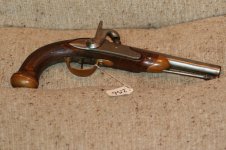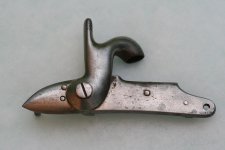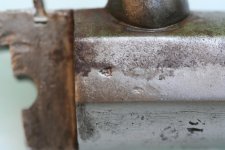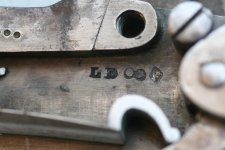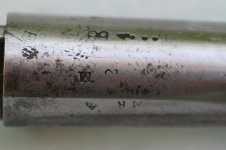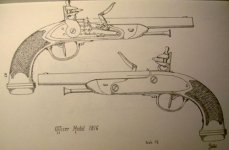I have this nice flint conversion pistol I am trying to identify and value. It is in very good condition and has exceptional balance. It is .69 cal and I believe it to be a Belgium style conversion. The fit and finish is excellent. The ramrod is questionable. It looks like an Enfield. It has no threads. It could be a cut down from an old rifle or a reproduction. 90% of the marks are on the underside of the barrel or the inside of the lock. Inside the lock plate are the letters LD. Any help out there would be appreciated. More pictures are available on Gunboard Forums or by request.
Tom
Tom

